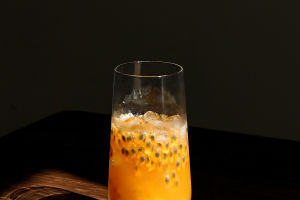Durian: the mere mention of this infamous fruit is enough to make some people cringe while others light up with excitement.
Known as the “King of Fruits” in Southeast Asia, durian is adored for its custard-like texture and rich, sweet flavor.
But here’s the catch - it smells... well, let’s just say it’s unforgettable. Some compare it to rotten onions or gym socks. Yikes, right? This powerful aroma has led to bans in hotels and public transportation across many parts of Asia.
What’s With the Smell?
So, what makes durian so stinky? It all comes down to sulfur compounds that are released when the fruit is opened. These compounds are similar to those found in foods like garlic and onions, but they’re much more intense in durian. The good news is that while the smell may be off-putting to some, the taste is said to be heavenly - a sweet, creamy custard-like texture with a unique flavor that’s hard to describe but often likened to almonds, vanilla, and even caramel
The Hotel Ban
Durian is banned in many hotels and public spaces, especially in Southeast Asia, due to its extremely strong and pungent odor, often likened to rotten onions or sewage. The smell can linger in rooms and public transport for hours, making it disruptive to other guests or passengers. Countries like Singapore, Malaysia, and Thailand commonly enforce these bans in hotels, subways, and buses to maintain a pleasant environment for everyone. Despite the bans, durian remains a popular and beloved fruit in the region.
Why You Should Give It a Try
Okay, the smell might be daunting, but durian has some redeeming qualities that are worth the challenge. First off, it’s packed with nutrients. It’s high in fiber, vitamin C, and B vitamins, making it a great choice for digestive health and boosting your immune system. It’s also rich in healthy fats, which is uncommon for fruits. In other words, it’s like nature’s dessert with a side of health benefits. Who can say no to that?
A Cultural Icon
Durian isn’t just a fruit; it’s a cultural icon in Southeast Asia. In countries like Thailand, Malaysia, and Indonesia, durian is celebrated with festivals and even dishes made entirely from the fruit. Durian-flavored ice cream, pancakes, and candies are common, showing just how beloved it is despite its pungent aroma. Trying durian is like getting a taste of Southeast Asian culture in its purest form!
Durian Fruit in Thailand 🇹🇭- Trying 8 Different Varieties of the World’s Best Fruit!!
Video by Mark Abroad
Durian for Beginners
If you’re new to durian, don’t dive in with the largest, ripest fruit you can find. Instead, try durian-flavored products first, like candies or ice cream. These give you a mild introduction to the flavor without the full blast of the smell. Once you’re ready to take the plunge, head to an outdoor market (trust us, it’s better outdoors!) and ask for a small, ripe durian. The price varies depending on the season and region, but you can expect to pay between $8 to $15 for a good-sized fruit.
Sure, durian might be banned in hotels, but that’s all part of its charm! Don’t let the smell scare you away from trying this iconic fruit. So, next time you’re feeling adventurous, grab a durian and discover what all the fuss is about - you might just become a fan!


